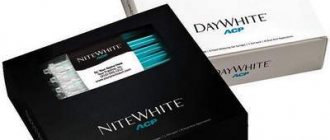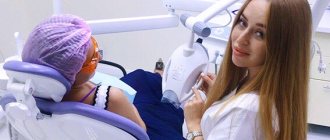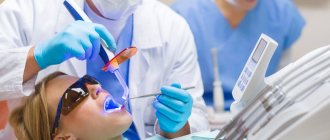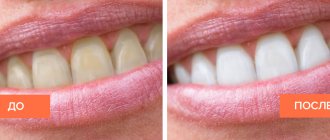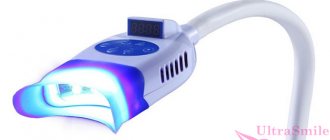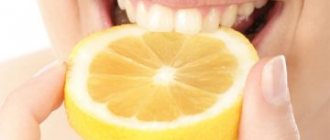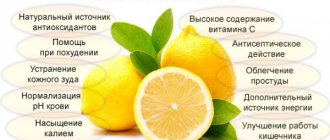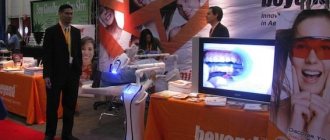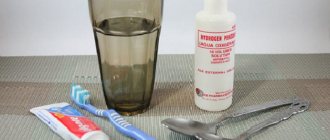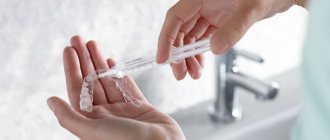One of the most popular services in cosmetic dentistry today is teeth whitening. In no way related to medicine, nevertheless, it is in great demand, because... in the minds of many of us, it is white (light) teeth that are an indicator of their health, as well as the high social status of their owner.
As I wrote earlier, such ideas were not always dogma, and how long such a fashion will last is unknown, but today it is so. I myself am neither a supporter nor an opponent of this procedure, and therefore I will try to talk about whitening as objectively and unbiasedly as possible. Moreover, I will do this in the form of questions and answers (i.e., a kind of FAQ on teeth whitening).
What is whitening and how does it differ from professional cleaning?
Very often patients say: “I want to whiten my teeth because... they have stains from coffee and cigarettes.” At the same time, they confuse 2 different procedures - teeth cleaning and teeth whitening. If brown plaque has accumulated on your teeth or stones have formed, then you need professional teeth cleaning, which is carried out with ultrasound, sandblasting (air-flow) or simply with a brush and a special professional abrasive paste. In this case, the dentist simply removes plaque from the surface of the teeth without changing their natural color. Although they become lighter, this is not bleaching. The whitening procedure involves the use of a strong oxidizing agent to lighten the actual tooth tissue. Hydrogen peroxide or carbamide peroxide, familiar to any unnatural blonde, is used as an oxidizing agent (it is approximately 2 times weaker than hydrogen peroxide). Penetrating into the internal structures of the tooth, the released active oxygen destroys the molecules of natural pigments, which leads to the fact that the tooth becomes lighter.
This is what plaque on teeth looks like, resulting from the abuse of cigarettes, coffee, and strong tea. It can be removed by professional cleaning, which has nothing to do with bleaching.
Comprehensive hygienic cleaning - an alternative option
Some groups of patients may be harmed by whitening procedures. In this case, the dentist uses safe professional hygiene methods. They are carried out in a clinical setting. Professional cleaning removes dark plaque and deposits from the enamel, and also brightens it by 1-2 tones. Can be performed for carious lesions, gingivitis and periodontitis, during pregnancy and lactation.
Hygienic cleaning methods:
- ultrasonic: using a scaler (ultrasonic device), plaque and plaque are carefully removed from the surface of the teeth,
- Air Flow method: enamel is cleaned with a suspension of water, air and tiny abrasive particles. In addition to removing interdental deposits, the surface is gently polished. It is recommended to carry out immediately after ultrasound. Combined use gives excellent results in lightening the enamel.
What types of whitening are there? Which whitening method is more effective?
If we talk about really effective whitening, then there are only two types. Office and home. I repeat once again that the essence is the same everywhere. What's the difference then? Office work, as you might guess, is carried out in the dentist’s office. It is produced by gels with a high concentration of bleaching agent (usually 35-38% hydrogen peroxide). You cannot do procedures with such concentrations yourself, because contact of the gel of such concentrations with the mucous membrane causes severe burns. The doctor uses numerous means of protection so that only the teeth are whitened, and not the tongue or lips. Some whitening systems (Zoom, LumaCool, etc.) involve activating the gel with a special lamp for a faster and more effective procedure. Some are simply applied to the teeth and work without any additional activation by light (Opalescence, Bleach n' Smile , etc.) In any case, the procedure takes about 1-1.5 hours and the result can be seen almost immediately. Especially in systems with light activation of the gel.
This photo shows the process of in-office whitening with the Opalescence XtraBoost system, which I prefer to use in my practice. The green arrows indicate the actual whitening gel (38% hydrogen peroxide), the blue arrows indicate the protective coating of the gums (the so-called “liquid dam”), the black arrows indicate a temporary plastic crown, which does not whiten and will be replaced with a permanent one after completing the whitening course.
Home whitening involves the patient performing the procedure independently at home. BUT! Under the supervision of a doctor exclusively! Ideally, you come to the doctor, in 1-2 days they make a special plastic individual mouthguard for your teeth, give you instructions on what gel, what concentration and according to what scheme is best to use in your case. And then at home you do everything exactly as the doctor ordered. Results can usually be seen within a couple of weeks. Exactly the same result as with the cabinet version.
The custom tray is filled with whitening gel and placed over the teeth. Mouthguard wearing patterns vary and must be selected individually by the dentist.
Let's summarize the pros and cons of teeth whitening options . In-office treatment is faster, but it is usually more expensive and is often associated with the appearance of unpleasant sensitivity, both during the procedure and for some time after it. Home whitening will give a similar result over a longer period, but it is cheaper and, as a rule, does not cause discomfort in the form of increased tooth sensitivity. In cases where the result is not required right now (unexpected wedding, urgent important date, etc.), it is better to choose home whitening. But if you are not confident in your accuracy, you don’t want to spend a long and tedious time remembering all the rules and following all the recommendations, prefer a less complicated office option.
If you suddenly have an important event in your life that you need to approach with a dazzling smile, then in-office whitening is your choice.
Classification of whitening systems
All available complexes designed for teeth whitening can be divided into two types - professional (carried out only by a dentist) and for home use (carried out outside the clinic). Below we will talk in detail about the classification of whitening methods.
Important! Regardless of which method the patient chooses for whitening, doctors recommend professional enamel cleaning 5-7 days before the procedure. This is necessary to effectively remove plaque and bacterial film. Otherwise, lightening may not give the expected results.
Will my teeth have sensitivity after the whitening procedure?
I began to partially answer this question in the previous paragraph. In each case, the manifestation of hypersensitivity during and after the procedure cannot be predicted; everything is quite individual. Generally speaking, the appearance of increased sensitivity of bleached teeth to one degree or another manifests itself after any whitening method. The faster the procedure occurs, the higher the concentration of the whitening gel, the stronger and longer the discomfort. Therefore, according to the degree of severity of unpleasant sensations, we can rank the procedure options as follows: in-office with the use of activating lamps gives complications more often and the intensity of unpleasant sensations is higher, in-office without activating the gel with light - less, home - least often, up to complete absence. One way or another, there is no need to be afraid of this. Usually, however, the sensitivity is not very intense and lasts a maximum of a few days. In addition, there are special products to reduce tooth sensitivity that you can use during this period. In some whitening systems, they come complete with all consumables for the procedure, and are given to you by the doctor.
ZOOM whitening method
The Zoom teeth whitening system has been around for a long time. There are three types: Zoom, Zoom 2 and Zoom 3. Today, the most popular, safe teeth whitening method is Zoom 3. The main advantage of this technology is a snow-white smile that will last for a long time. Gentle teeth whitening is another feature of the method. The effect of the gel on the tooth is gentle and safe. The procedure can be performed even if there are diseases of the oral cavity. Lightening of tooth enamel occurs evenly. Another advantage is that after the procedure the enamel is strengthened and a preventive effect against caries occurs. During the procedure using the Zoom 3 method, no pain is felt due to the local influence of the device’s beam. In one procedure, you can lighten tooth enamel by 10-12 shades.
Is teeth whitening a harmful procedure?
As one medieval doctor said, “All poison is just a matter of dose.” The same can be said here. It is no secret that there is absolutely no benefit from bleaching in the medical sense. But there will be no harm from a competently carried out procedure. Suffice it to say that in the USA the bleaching procedure is very popular, and is generally equated to hair lightening, because... they even carry it out in shopping centers, not seeing any sedition in it. Therefore, if you really want to, bleach it. Only under the supervision of a doctor. In addition, the teeth on which the gel will be applied must be healthy, they should not have leaky fillings or caries. The dentist should check all this before you go into all serious troubles. He should also choose the best whitening method specifically for you and your teeth . Suggest the correct scheme for using products for home use, explain the features of dental care, etc. and so on. In general, conduct a full briefing and control. Only in this case the procedure will be as safe as possible and will bring nothing but a refreshed, white-toothed smile (if you are dreaming of it).
Teeth whitening looks so unpretentious and mundane in many shopping centers in the United States. While your wife is replenishing her wardrobe, and her beloved mother-in-law is replenishing her refrigerator, you can lie down and benefit your appearance.
Using Zoom technology for whitening is strictly contraindicated if:
- The presence of a large number of fillings, caries;
- Gum disease;
- Allergies to used drugs;
- A tumor of a malignant nature;
- undergoing chemotherapy;
- Pregnancy and breastfeeding;
- Age less than eighteen years.
Teeth whitening in Moscow using the Zoom method is cheaper than laser.
When choosing a method, it is better to consult with professionals and contact a clinic that is licensed for this procedure and has experienced dental hygienists on its staff.
There are many small clinics in Moscow that offer affordable teeth whitening. Cheap doesn't mean bad. Sometimes a visit to inexpensive dentistry leaves a better impression, and the result of the work surpasses expensive treatment.
In the end, I would like to say that taking care of your teeth should come first. Problems with the oral cavity can cause gastrointestinal diseases and other health problems. We wish that teeth whitening for residents of the city of Moscow takes place quickly and pleases with its results.
How effective and harmful are whitening toothpastes?
Here it must be said that the vast majority of so-called whitening pastes are actually not capable of whitening anything, because... they simply lack an oxidizing agent. So this is a kind of advertising ploy by the manufacturers. But what they do have is a higher content of abrasive substances for more effective plaque removal. You should not use such toothpastes regularly; it can cause serious harm to your teeth. At a minimum, this may threaten the appearance of increased sensitivity of teeth , and at a maximum, the appearance of non-carious lesions (mainly wedge-shaped defects). They can be used only temporarily (no more than one medium tube is used up) and it is advisable to alternate it with regular toothpaste. It is needed primarily by heavy smokers and coffee lovers. If you are not one of them, then you should not turn your attention to “whitening” toothpastes. In some rare cases, whitening toothpastes do contain small amounts of a bleaching agent. And such a paste really has the right to be called “whitening.” They are sold more often in pharmacies and are much more expensive than regular pastes. But even with regular use, you should not count on a noticeable effect from their isolated use. Concentrations are too low. As a rule, they are used for the period while the home whitening process is in progress to enhance and maintain the effect.
Here you can also talk about other “pharmacy” products for teeth whitening – various varnishes, strips, etc. All of these are very ineffective drugs for the same reason - a low concentration of the bleaching agent. To feel the results from them, you need to have a very high power of self-hypnosis. So it's just wasted money.
Contraindications
There are general and local ones. If the former are present, any bleaching is contraindicated. In case of local contraindications, clinical bleaching is not recommended.
Common ones include:
- Age up to 18 years
- Pregnancy, lactation period
- Receiving chemotherapy
- Taking tetracyclines or tretinoin and other light-sensitive drugs
Local contraindications include:
- Caries
- Wedge-shaped defects
- Presence of orthopedic structures in the smile area
- Presence of fillings
- Periodontitis
- Increased gag reflex
What effective folk whitening remedies exist? How to whiten teeth at home?
This question could be answered briefly: there are no effective traditional methods of teeth whitening . And I would like to warn against the thoughtless use of improvised means in order to save money. Very often this backfires. It is strictly forbidden to use soda, tooth powders, lemon, activated carbon, etc. to brighten your smile. in different combinations. I personally once had a patient who spent a considerable amount of time brushing her teeth with a mixture of baking soda and lemon juice. When she came to me, I learned for the first time what enamel erosion looks like. At that time I had not yet photographed clinical cases, but it looked something like this.
How do you like this “whitening”? Instead of beautiful teeth, they were irreparably damaged and their restoration cost her a lot of money. As usually happens, thoughtless savings turned into even greater expenses.
I also heard a story from colleagues about how one of the patients whitened his teeth with “Toilet Duck”, because the bottle said “safe for enamel.” Well, what else can you say?
to whiten your teeth on your own online . Most of them are just a waste of time. And some are simply harmful. So, in pursuit of beauty, do not lose your sanity, otherwise you risk losing your teeth. Ultimately, if you need to post your photo on a social network or forum, you can whiten your teeth using Photoshop (as they do in glossy magazines for unnaturally white-toothed models). Or if you need white teeth for some important occasion, you can visit the solarium several times, use a foundation of a darker shade... against the background of dark skin, the teeth will appear lighter even without any bleaching (just look at the “tanned” Africans, whose teeth are always appear dazzlingly white just because of the color of their skin).
Comments
Which professional method can still be considered the best?
Bogdan (10/11/2020 at 11:14 pm) Reply to comment
- It all depends on the clinical situation, the patient’s expectations and his financial capabilities.
Editorial staff of the portal UltraSmile.ru (10/14/2020 at 09:25) Reply to comment
I just have very sensitive teeth. I had it cleaned at the clinic, but it didn’t really help change the shade. I want more whitening effect...
Arina (10.30.2020 at 15:45) Reply to comment
- Dear Arina, perhaps you better consider microprosthetics, when the enamel of the teeth is covered with thin overlays made of ceramic, composite or zirconium dioxide. Such overlays can be snow-white at the request of the patient. They will not only give your teeth the desired level of whiteness, but will also hide minor defects (cracks and chips, old fillings, crevices). They will also protect sensitive enamel from external factors, prevent its destruction, and help reduce the level of discomfort from hard, cold, hot and sour foods.
Editorial staff of the portal UltraSmile.ru (03.11.2020 at 09:17) Reply to comment
Write your comment Cancel reply
Is it possible to whiten a dead, darkened tooth?
Yes, and this procedure is called endobleaching . Those. internal tooth whitening. It may be needed when, after removing a nerve in a tooth, for various reasons it becomes dark, turns yellow and begins to stand out from its healthy neighbors. In this case, access to the canal is made in the tooth, it is reliably isolated, and the same hydrogen peroxide/urea whitening gel remains in the cavity for 2-3 days. As a result, the darkening of the dead tooth can be eliminated. Often this procedure must be performed before prosthetics of the front teeth with metal-free crowns or veneers. Due to their fairly high transparency (which is very necessary from an aesthetic point of view), any change in the color of the tooth underneath will be unpleasant to show through. This may prevent you from making restorations of the same color.
Upper central incisor darkened after depulpation
The same after the internal bleaching procedure
How the procedure can turn out - possible complications
The active components of the formulations used penetrate through the enamel into the dentin. This layer consists of mineralized collagen tubes in which the processes of odontoblasts with pain receptors are located.
The active ingredients of the brightening gel oxidize the organic elements of dentin, dehydrate and thereby severely injure the processes of odontoblasts. As a result, the enamel becomes not only snow-white, but also more porous, which means weaker and susceptible to external irritants. In the first days after the procedure, many patients complain of increased sensitivity to temperature changes in food and drinks, an acute reaction to sweet, salty and sour foods.
“About 3 years ago I whitened my teeth with ultraviolet light. The pain appeared on the second visit, and on the third it became almost unbearable. The doctor warned that it was better to postpone the third session as much as possible, but I was sorely short of time. In general, in the evening I was saved by painkillers. Then the pain disappeared and everything was fine until I noticed a crack on my front incisor. That's all your safety! I had to restore half a tooth..."
Kris, from correspondence on the woman.ru forum
In severe cases, when violation of the technique leads to complications, a chemical burn of the pulp occurs and the need to remove the nerve arises. Burns to the mucous membrane can also occur if the concentrated gel gets on the gums. With too frequent sessions or prolonged exposure to the lightening gel, cracks and chips may appear on the enamel.
What is restorative bleaching? Is it possible to whiten teeth with veneers?
Restorative bleaching is, in most cases, a great stupidity that some doctors suggest that their patients do to themselves. This procedure involves covering the front surface of the teeth with a thin layer of white opaque composite material (it was popular in the past), or the same white opaque ceramic veneers/lumineers. In both cases, an irreversible change in the surface of a healthy tooth is assumed. In the case of a composite, you get a very dubious option from the point of view of aesthetics and service life. Well, about all kinds of “ veneers without grinding teeth/lumineers/ultraneers , etc.” you can read it here. In what cases can this option be used? There is only one good indication here – serious generalized (i.e. on all teeth at once) changes in their color. Such problems may be associated with impaired development of tooth buds in childhood or even in the womb. The most common of these pathologies are the so-called. tetracycline teeth.
This is what one of the unpleasant lesions of teeth looks like during their development, the so-called. "tetracycline teeth"
You can also resort to total restoration of all visible teeth if you desperately need teeth the color of plumbing fixtures - absolutely white. It will never be possible to whiten healthy, normal teeth to such a state using any method, and attempts to do so can still end disastrously for the teeth. So if you are a movie and TV star, and your mouth is periodically shown in close-up on the entire screen throughout the country, and the size of your future fees depends on the degree of whiteness of your teeth, then restorative bleaching is quite an option for you... After all, against the background of circular braces , liposuction, enlargement/reduction of everything that can be enlarged/reduced, total teeth veneering looks like a completely innocent and absolutely safe children’s prank.
Why do teeth turn yellow?
There are many methods of whitening; it is recommended to decide which one to choose together with your dentist.
The doctor will be able to identify the cause of the color change and select a treatment method that is effective in a particular case. To effectively whiten your incisors, it is recommended to first determine why they are yellow. Healthy teeth are not snow-white by themselves; the outer layer naturally has a milky or beige tint, which is the physiological norm. In some people, the pigment is a little brighter, causing the smile to appear yellowish. The reason is the high concentration of minerals that make the incisors strong.
If the incisors themselves are snow-white and matte, this is a sign of negative changes in the composition of the enamel. Such teeth can soon crumble and they are susceptible to caries and are easily damaged by physical impact.
A yellow tint does not always indicate oral health. If a person has naturally milky incisors, but after a few years they have turned very yellow, the reason may be the following:
- consumption of coloring foods in large quantities - coffee, tea, bright berries, food with dyes;
- smoking, including hookah;
- the presence of tartar and plaque due to insufficient hygiene;
- age-related changes in enamel color;
- pathologies of the oral cavity.
The smile turns yellow in older people, this is due to changes in the outer layer, it becomes porous and dyes penetrate well inside.
How to care for whitened teeth?
Immediately after the whitening procedure, for 2-3 days it is better to refrain from coloring products - wine, berry jam, strong tea (especially cheap... from bags in which nothing but paint is poured, not even tea leaves), coffee, smoking (if possible ) and so on. If increased sensitivity occurs after the procedure, you can use a special paste for sensitive teeth (Lacalute Sensitive, Sensodyne) or ask your dentist for a special gel to reduce sensitivity, which often comes in the same set with a whitening gel. In the future, no specific care for whitened teeth is required. Over time, their natural color will be restored. In this case, you can conduct a short maintenance course of home whitening, after consulting with your dentist. Typically, such a need arises no more often than every 6 months to 1 year.
Second group: home methods
Home methods fall into several categories.
Whitening with professional products
The procedure is carried out at home. For example, using gels developed by manufacturers of well-known office techniques (Zoom, Amazing White, Opalescence). For better effect, they are used in conjunction with mouth guards.
The group of professional products also includes various toothpastes with hydrogen peroxide and a high content of abrasive particles, strips and pencils. The products are represented by popular and not so popular brands: Splat, ROCS, Rembrandt, PresiDENT, Crest, Amazing White.
For whitening, the tray is filled with a special whitening composition
What are the advantages of such funds:
- they are considered relatively safe, since they were created at production sites under the guidance of experienced specialists, have a proven composition, and also contain useful minerals and enamel-strengthening components,
- can be used at home,
- These whitening products are presented in a wide range and in all price categories.
What effect do professional products for home use promise? If we are talking about gels with hydrogen peroxide from well-known manufacturers of office techniques, then with the right approach they can lighten the enamel by up to 4-6 tones. When buying strips and pencils, the result will be more modest - 3-4 tones. If you use whitening pastes, then the most you can count on is 1-2 tones.
It is assumed that the selection of a professional home whitening product should be carried out by a doctor who has previously examined the patient’s oral cavity and prepared for the procedure (treatment of teeth and gums, removal of plaque, strengthening of enamel). The specialist explains how to use this or that composition, after which the patient performs all the prescribed manipulations at home, but strictly in accordance with the instructions and recommendations given.
However, it often happens that a person buys professional products without consulting a dentist at all and without preparation, which is no longer safe and does not promise the effect guaranteed by the manufacturer.
Whitening strips are also used for these purposes.
The disadvantages of these types of whitening include that it will not be possible to achieve an instant result - you will have to use the products for at least 10-14 days. And the effect will last for only 1-3 months, maximum – for 1-2 years, if you use professional gels with mouth guards, and only if all restrictions are observed (“white” diet, smoking cessation, daily thorough oral hygiene).
Home whitening using non-professional products
This group includes types of teeth whitening, where it is assumed that enamel lightening can be achieved through the use of natural products and folk recipes. They are inferior to professional (office and home) methods in efficiency and safety. They need to be used for a long time in order to ultimately lighten the enamel by just 1 shade.
Of course, dentists do not recommend using traditional recipes, as they can do more harm than good. However, they cannot be ignored in the section of our article, because many people, one way or another, try to improve the color of enamel with the help of various natural ingredients: hydrogen peroxide, activated carbon, strawberries, lemon juice and peel, turmeric, banana peel, tea oil tree and so on.
Banana peel can be used in home teeth whitening
What is laser whitening? Is it true that it is the most effective?
Laser whitening/photo whitening (I came across other names) - all of this is essentially the same thing. In order to stand out from the crowd and offer patients something “unique... and only here,” clinic advertisers come up with a bunch of names for the same procedure. All this is standard whitening with gels, which are activated by the light of special lamps. Indeed, such systems (Zoom, LumaCool, LumaArch and many others) give the fastest and most noticeable results. But at the same time they also give the greatest number of cases of the development of very intense hypersensitivity. Plus, due to the rather high cost of consumables required for each procedure, the high cost of the lamp itself, which must be “beaten”, the price for such a service turns out to be the highest of all possible options for whitening procedures. But the choice is ultimately yours. Do you want instant results visible to the naked eye? Pay with money and discomfort from pain. Do you want it cheaper and with a minimum of discomfort? Then be patient and forget about “laser” whitening.
The generation of advertisers who grew up watching Star Wars apparently imagines the dentists of the future in this way, luring patients to clinics for “laser treatment of caries,” “laser whitening,” and “laser implantation.”
In fact, this is what the Zoom lamp for “laser” (i.e., actually conventional, light-activated) whitening looks like these days.
Are artificial crowns and fillings bleached?
No. No crowns or fillings can be whitened using any method. Therefore, after lightening your teeth, you will have to replace any restorations with those that are visible when you smile and talk. If your teeth have caries or leaky fillings, then before whitening a temporary restoration is made, which, after all lightening procedures are completed, is changed to a permanent one, taking into account the resulting shade of the teeth.
This photo shows that the plastic temporary crown, originally made to match the color of the neighboring teeth, after the whitening procedure stands out strongly against the background of its lighter neighbors
These are the main questions about teeth whitening that I have encountered. This article will be updated as new ones appear. If you are thinking about this fashionable procedure, remember that beautiful teeth are, first of all, healthy teeth. And in attempts to improve their appearance, you should not harm them with dubious methods or independent exercises using improvised means.
